WSSC Water is Winter Ready
Our crews are committed to serving our customers 24/7/365 and are prepared to respond to the increase in water main breaks and leaks we experience during the winter months.
Our crews are committed to serving our customers 24/7/365 and are prepared to respond to the increase in water main breaks and leaks we experience during the winter months.
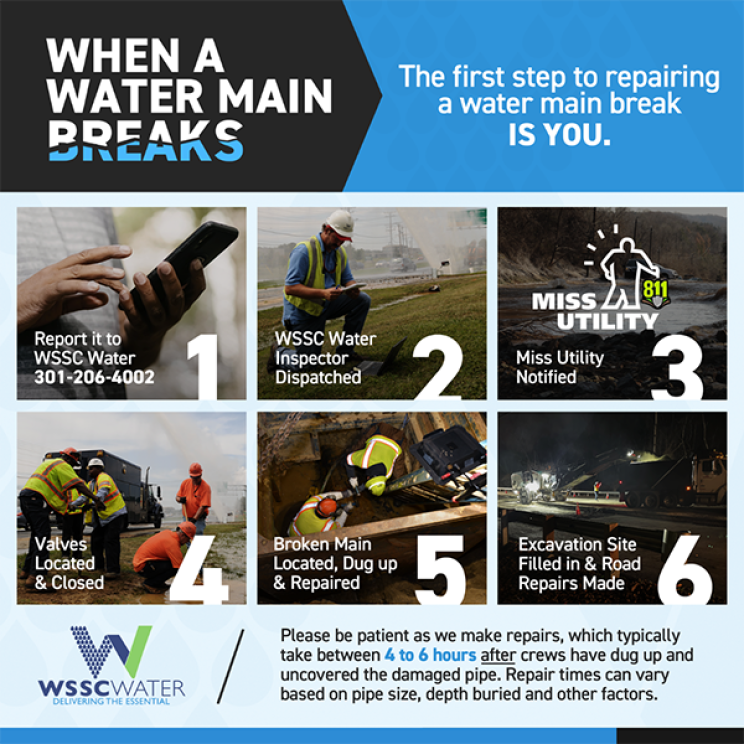
Download the infographic (PNG 1.38 MB)
Text alternative
There are three simple ways to report a water main break:
We encourage you to sign up for our Customer Notification System (CNS for short) to alert you about work in your area that may affect your service or daily routine.
On average, WSSC Water crews repair nearly 1,800 water main breaks and leaks each year. This past winter (November 2024-February 2025), crews responded to 1,496 breaks.
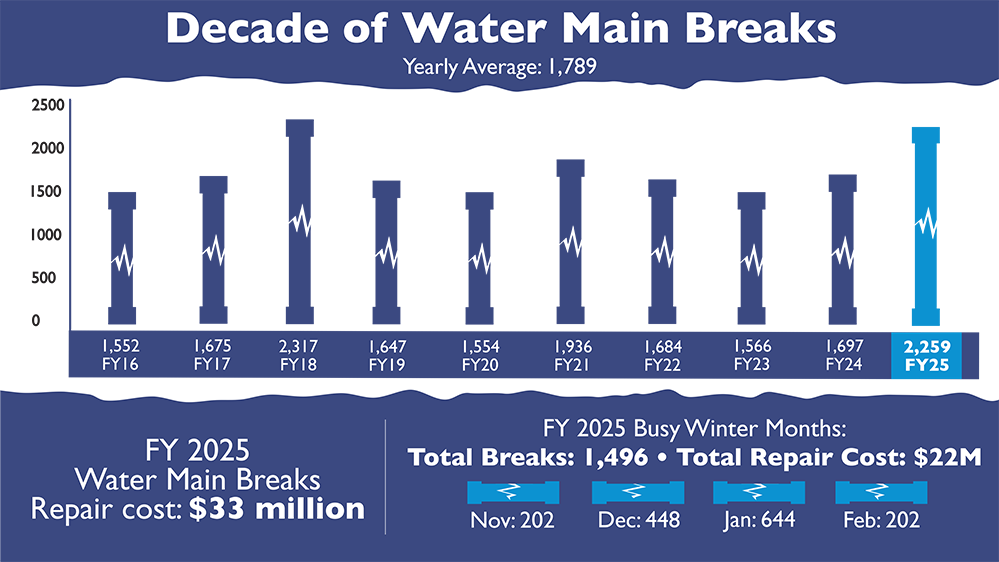
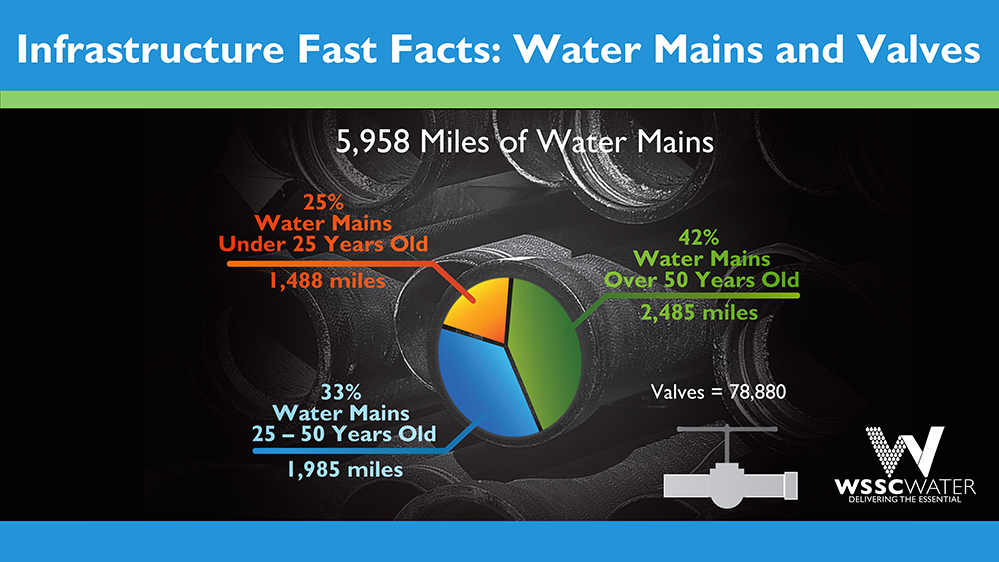
With a direct connection between dropping water temperatures in the Potomac River and increasing water main breaks, WSSC Water keeps a close eye on the temperature of the Potomac River this time of year. Maryland’s largest water utility typically experiences an increase in breaks a few days after the river temperature hits a new low.
Before cold weather sets in:
If a pipe in your home freezes:
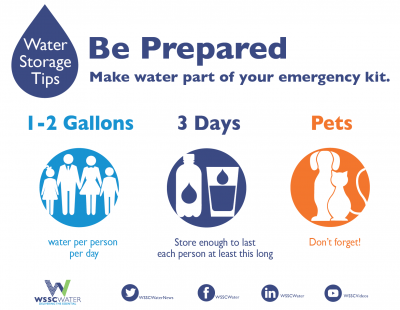
A water main break can occur at any time, but especially during winter months. Additionally, meters sometimes can freeze, causing an unexpected water outage. Be prepared: Store water for your household ahead of time. The rule of thumb is to store one to two gallons per person, per day, to last at least three days. Remember to store water for your pets!
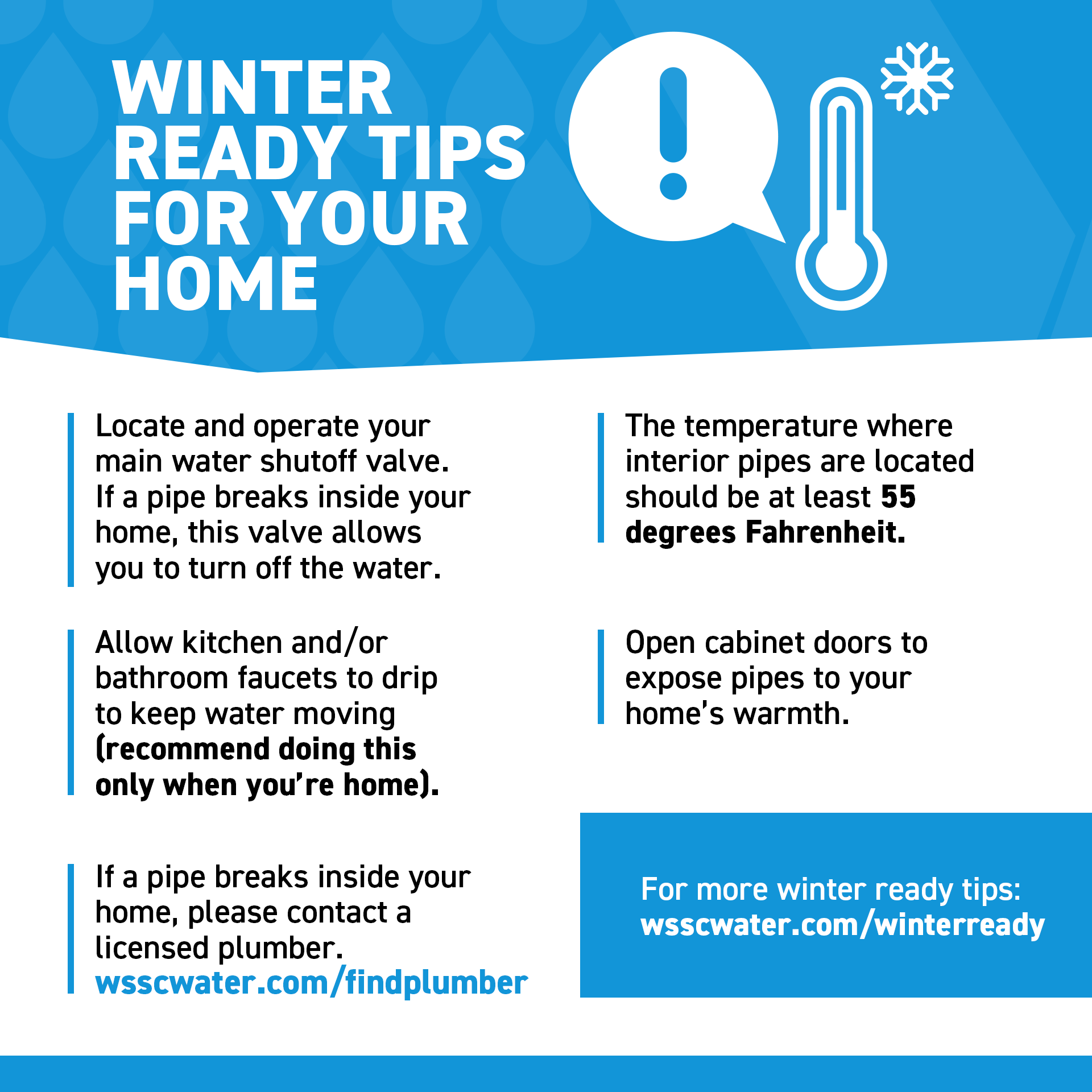 Download the English infographic (PNG 203 KB) | 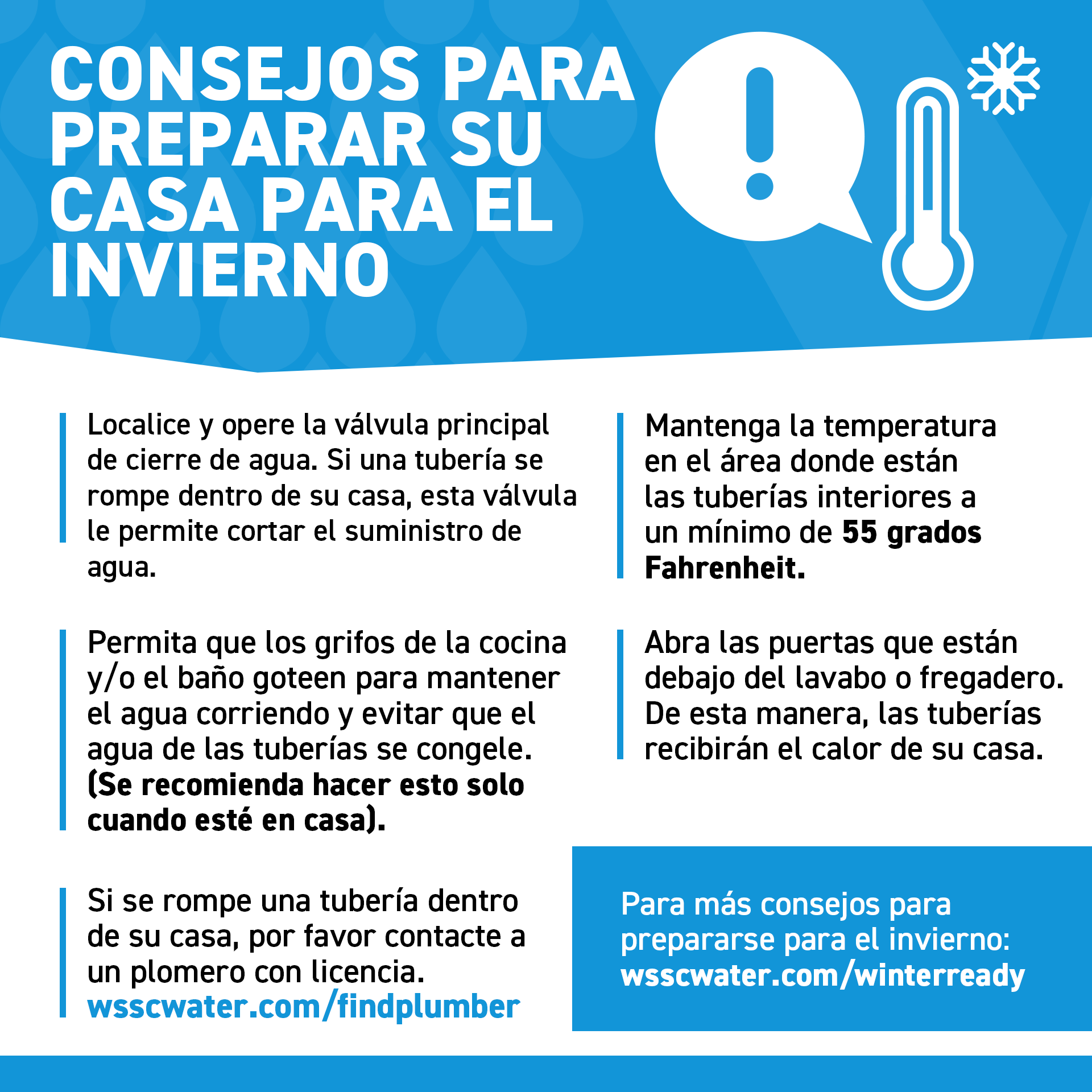 Descarga la infografía en español (PNG 242 KB) |